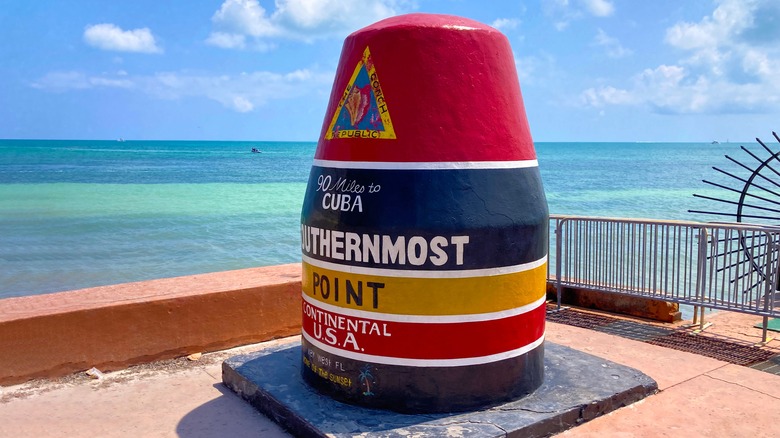The Underrated And Breathtaking Hike That Expands Upon The Iconic Appalachian Trail
When it comes to big thru-hikes, it's hard to compete with North America. The U.S. has several long wilderness routes such as the Pacific Crest Trail, the Continental Divide Trail, and the world-famous Appalachian Trail. Its northern neighbor also boasts the Trans Canada Trail, which, at 15,000 miles, is one of the longest in the world. Both the United States and Canada possess incredible scenery best seen from the ground level at a walking pace, and the Eastern Continental Trail allows hikers to experience this firsthand on a trek through some of the most breathtaking parts of both nations. Stretching from the shores of Newfoundland to Key West, Florida, this 5,700-mile walking route meanders along rocky Canadian coastline and shoots through the mountains and forests of Maine. It then follows the entirety of the Appalachian Trail before heading into northern Georgia, Alabama, and the full length of Florida, from the Panhandle to its southernmost isle.
The Eastern Continental Trail is a chance for hardcore hikers to bite off one of the longest and most challenging routes on earth, all the while soaking up the natural glory that North America's two biggest countries have to offer. That said, you don't have to do the whole thing to experience its sublimity. Any section will deliver raw beauty, solitude, and the unique taste that each region offers.
Canada's eastern splendor and the Appalachian Trail
Beginning in Crow Head in Newfoundland, a destination for European cultural experiences, the Eastern Continental Trail follows the route of the 1,580-mile long International Appalachian Trail (AIT) for its first section. This takes hikers through the rugged, stark country of Canada's far eastern province, with colorful fishing villages, sheer cliffs, and, if you're lucky, whales and off-shore icebergs. Going from Newfoundland to Nova Scotia requires a seven-hour ferry ride across open water, and another ferry will take you to the next segment on Prince Edward Island, Canada's smallest province. A third ferry drops you off near the trail where it resumes in Quebec before heading through New Brunswick and joining the northern terminus of the Appalachian Trail (AT) in Maine.
The Appalachian Trail is the oldest and most famous hiking path in the U.S. It follows the spine of the country's most ancient mountain range for nearly 2,200 miles from Maine to Georgia, and the Eastern Continental Trail allows you to do the entire Appalachian Trail as part of an even bigger hike. This rugged and rigorous route is known for its grinding elevation gains and losses; walking the length of the trail is said to be the equivalent of climbing Mt. Everest 16 times.
Even so, it winds through some of the most gorgeous natural surroundings in the Eastern U.S. — great stands of forests, meadows, and vista-rich ridge crests — as well venturing near many historic and picturesque small towns, which can be accessed via short detours from the trail.
Dive into the deep south and Florida
The AT ends in northern Georgia, but the Eastern Continental Trail continues on in several sections: the Benton Mackaye Trail, the Pinhoti National Recreation Trail, and the Alabama Roadwalk, before crossing into Florida. These sections add up to 550 miles of rambling through the hills and historic rural charm of the Deep South, whose languid rhythms are naturally taken in one step at a time.
The last three sections of the trail take walkers through the entire length of the Sunshine State. The 1,500-mile-long Florida Trail goes through the state's famous Panhandle before heading south, ending at the Big Cypress National Preserve. This trail heads through pine forests, spring-fed creeks, sandy coastline, as well as the kinds of wetlands Florida is famous for. It also offers walkers the opportunity to see a variety of wildlife, including black bears, panthers, alligators, deer, feral hogs, wild turkeys, river otters, sea turtles, and gopher tortoises.
The final section of the ECT is called the Keys/Everglades Road Walk. It essentially hugs the shoulder of Highway 1 for 200 miles all the way to the trail's terminus in Key West. This is a flat walk on asphalt and concrete that can be tough on the feet, but hikers are rewarded with views of turquoise waters, white sand beaches, and the laid-back, palm-tree charm that makes the Keys such a unique place to begin with.


